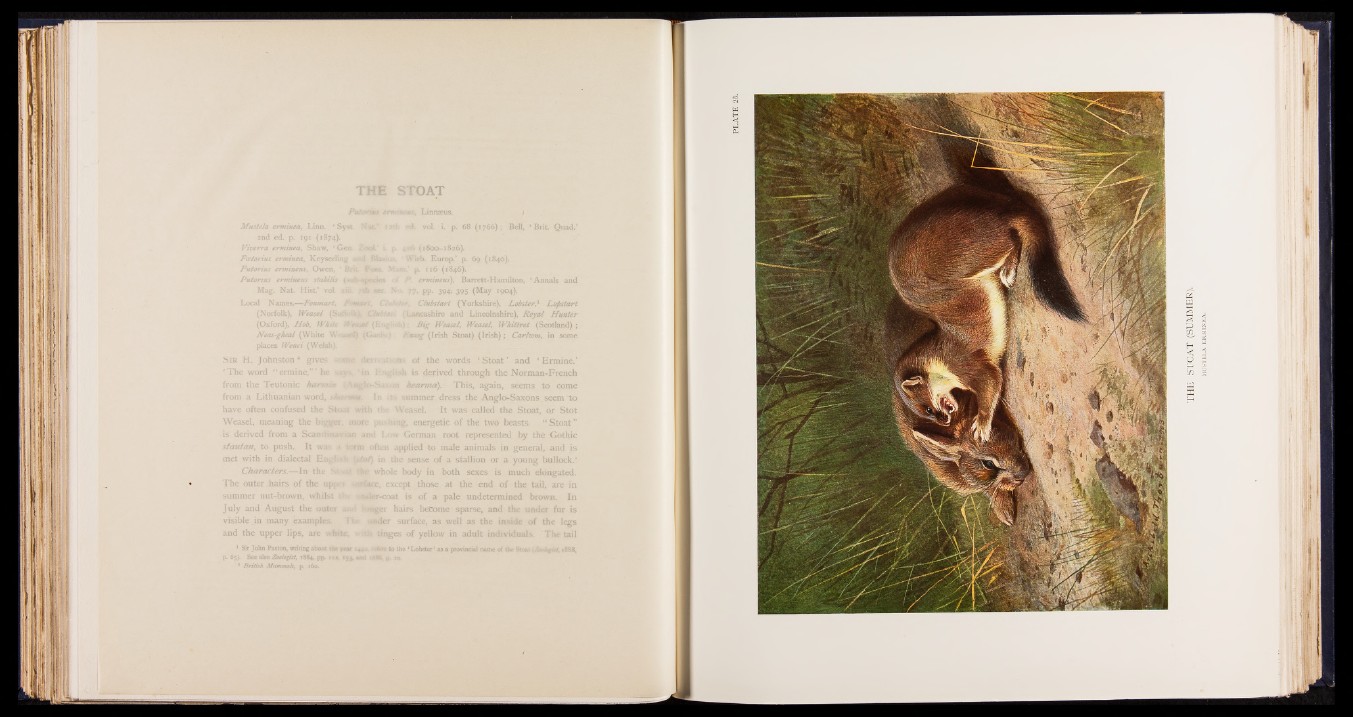
THE STOAT
Musiela erminea, Linn. ‘ Syst.
2nd ed. p. 191 (1874).
Viverra erminea, Shaw, ‘ Gen,
Putorius ermineus, Owen, ‘ Br
Puionus ermineus stabiles (sy
Mag. Nat Hist’ vol. xiit
irb. Europ.’ p. 69 (1840).
p. 116 (*846).
ermineus), Barretf-Hamilton, ‘ Annals and
7. PP- 394« 395 (May 1904).
Local Names.—Foumart,
(Norfolk), Weasel (Si
(Oxford), Hob, Whitt
places Wend (Welsh).
S ir H. Johnston3 gives a
‘ The word “ ermine,” ’ he a
from the Teutonic karmm
l the bigger,
1. It was a
( 'hi Clubstart (Yorkshire), Lobster,* Lopstart
lubt&ti (Lancashire and Lincolnshire), Royal Hunter
(English): B ig Weasel, Weasel, Whittret (Scotland) ;
: : Easog (Irish Stoat) (Irish); Carlwm, in some
■ ■ iv,*Laas of the words ‘ Stoat ’ and ‘ Ermine.’
English is derived through the Norman-French
-Saxon kearma). This,- again, seems to come
In its summer dress the Anglo-Saxons, seem “to
the Weasel. It was called the Stoat, or Stot
tore pushing, energetic of the two beasts. “ Stoat ”
t and law German root represented by the Gothic
:m often applied to male animals in general,, and is
■- /*/) in the sense of a stallion or a young bullock.’
the whole body in both sexes is much elongated,
ëg&ce, except those at the end of the tail, are in
■ ,:-i!er-coat is of a pale undetermined brown. In
: longer hairs become sparse, and the under fur is
:* under surface, as well as the inside of the legs
«Hik tinges of yellow in adult individuals. The tail
(49a, reSbn to the ‘ Lobster’ as a provincial name of the Stoat (Z tk g u i, *888,
THE STOAT (SUMMER).